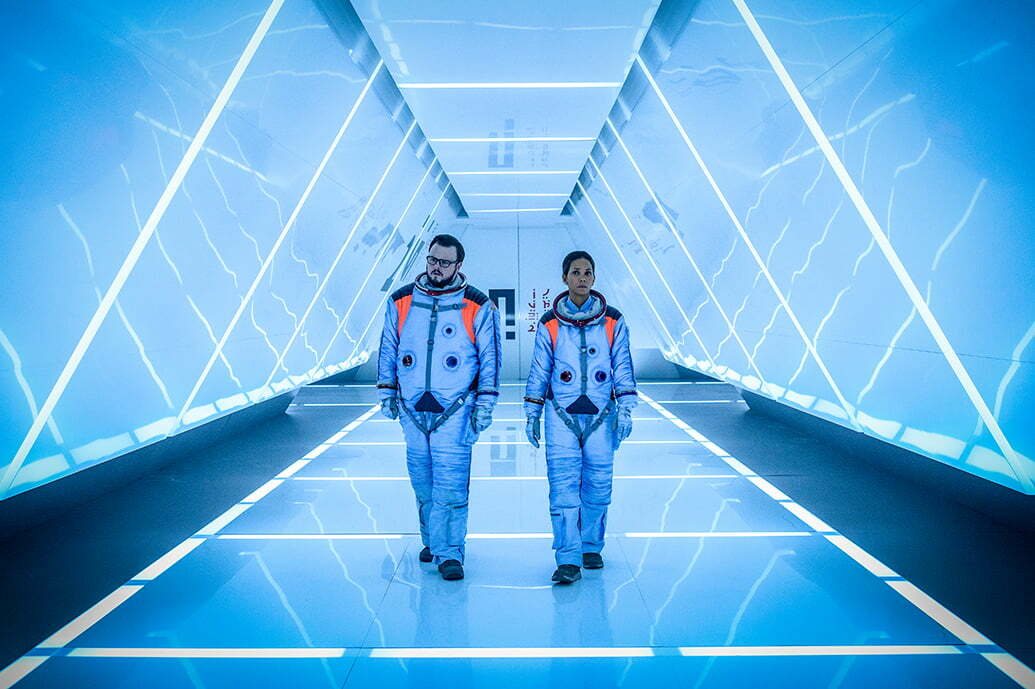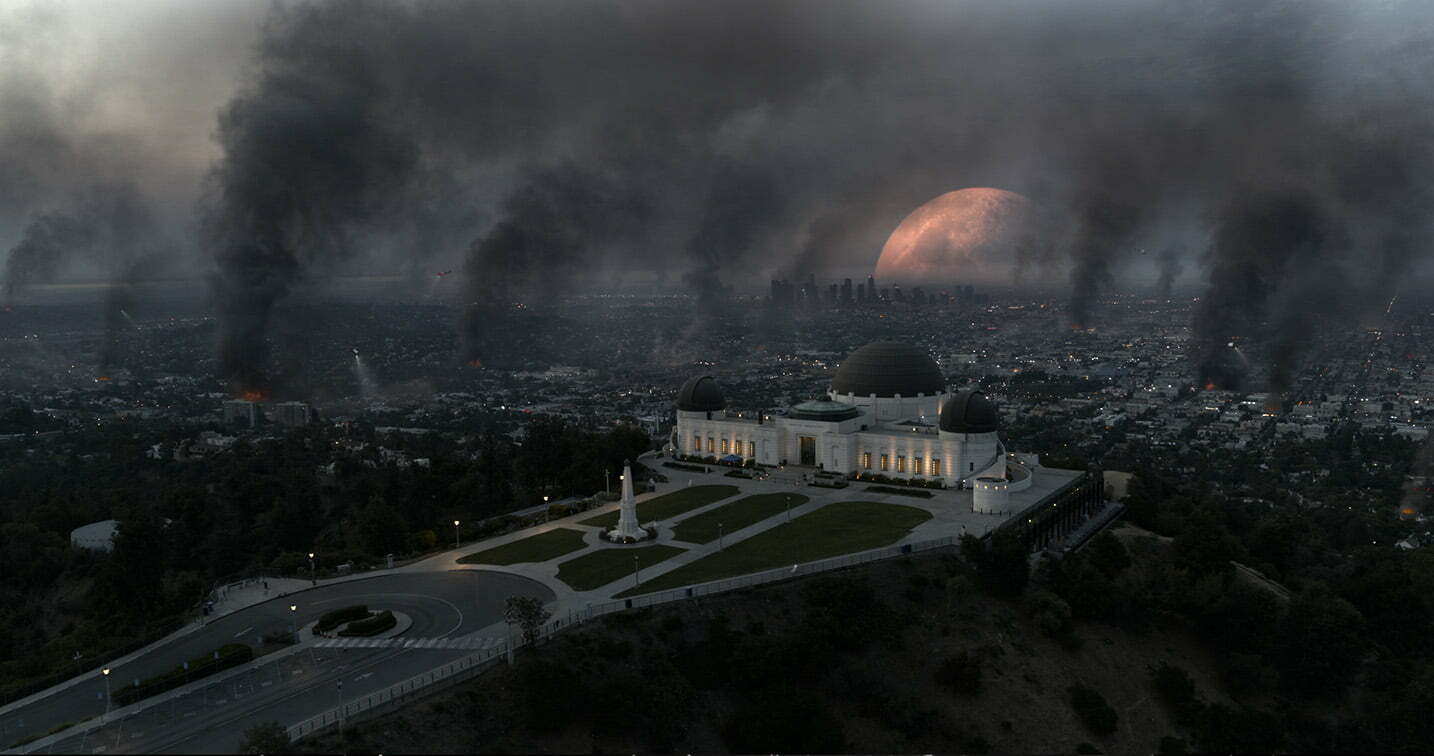MOONFALL director Roland Emmerich is a master of cinema spectacle, encompassing science fiction blockbusters, like Independence Day, 2012 and The Day After Tomorrow, as well as historical epics, including The Patriot and Midway. In addition to scale and scope, the acclaimed filmmaker’s work always presents a cornucopia of fun, relatable themes, fully realized characters, and powerful emotions about the power of hope.

For MOONFALL, a theory that described the Moon as something vastly different from what we learned in high school science class inspired Emmerich. “There are some who believe that the Moon is not a natural object,” he remembers. “I thought that was an intriguing idea for a movie. What happens if this object falls down to Earth? Of course, we would have to figure out how to stop it, but I was equally fascinated by the challenge of creating characters who embark on a mission to the Moon to save our planet, as well as the families who stay behind and struggle to survive the cataclysms that come with the Moon’s collision course with Earth.”
Emmerich, along with frequent collaborator Harald Kloser and screenwriter Spenser Cohen, crafted a screenplay combining gripping science fiction elements, ever-destructive disaster scenarios, and fascinating and relatable characters. The story unfolds over three weeks, so the filmmakers created a universe where the Moon would fall to Earth within that time frame. “I got my physics Moon set up perfectly in a harmonious orbit, and then I started messing with it,” says Travers. “I injected it with mass, then I did the simulation, and then rendered it all out. We had to figure out what could inject the Moon with all that mass, because nothing in the physical universe suddenly adds mass to an object.”
BEHIND-THE-SCENES
The Earthbound portion of MOONFALL is set in Colorado, which the filmmakers recreated on Stage 3 of Grande Studios in Montreal. “From start to finish, we were looking at six weeks to create about a mile and a half of Colorado landscape,” says Petruccelli. “We had a team of set designers using the newest technologies to digitize, replicate and scan real mountain ranges, dissect them, create ribs, exactly reproduce each one of these sections and skin them with the rocks that we created on set.

The big stunt scenes that take place on Earth had lots of moving parts, literally, because of the anti-gravity effect of the approaching Moon. Recreating Los Angeles in Montreal was an enormous undertaking. Says Petruccelli, “Everything was built: the runway, streets, all of the buildings. What made it authentically Los Angeles were the details. Precise detail went into the street dressing and graphics that we find on all the buildings. The destruction was quite something, because we had to dress the set as it would be and then go in and destroy it ourselves so that things fall where they would naturally fall. It’s not about throwing a bunch of destruction all over the place. You start with the real thing, imagine the catastrophic event, then you destroy it, which is fun.”
The U.S. space agency, NASA came aboard the project early on, and Emmerich was more than pleased – and a little surprised – by its enthusiasm. “They thought it was an interesting idea that portrays astronauts in a very heroic way,” he points out. “They were intrigued by our depiction of space and space travel, and were super cool about letting us use their rockets for the first recon mission. We also use the official NASA logo, which gives the film a certain authenticity, and they were helpful in sharing their high-definition photos of the Moon. NASA has very sophisticated cameras up there.”
Working in a real shuttle was invaluable to the actors. “We were pushing buttons that real astronauts have touched and equipment that they actually used to fly,” says Berry. “We also had a retired astronaut, Bjarni Tryggvason, with us to give us the rundown, so we weren’t just pushing buttons or clicking things randomly. We had a lot of advice and tutelage on when you’d push what and why you do what you do. We tried to keep it as authentic as we could.”
Berry shares her experiences about the challenges of acting in a void, which the VFX team would later fill with VFX. “In the film’s opening attack scene, for example, we’re looking at nothing; it’s all imagination. These movies are quite different from other movies because we really have to be able to commit to our imagination. Roland can share the premise and give us a basic idea of what will be happening, but we know all too well that the fully rendered scene will be more vivid than we can visualize. But we’re forced to use our imagination. It’s a really unusual way of working. We have to trust in what’s going to happen on the other side because we literally are looking at nothing much but some visuals on a screen that are kind of simulating what we might see with color tone and flashes of light.”
U.S. Release Date: February 4, 2022
Rating: PG-13
Discover more from SNAP TASTE
Subscribe to get the latest posts sent to your email.



